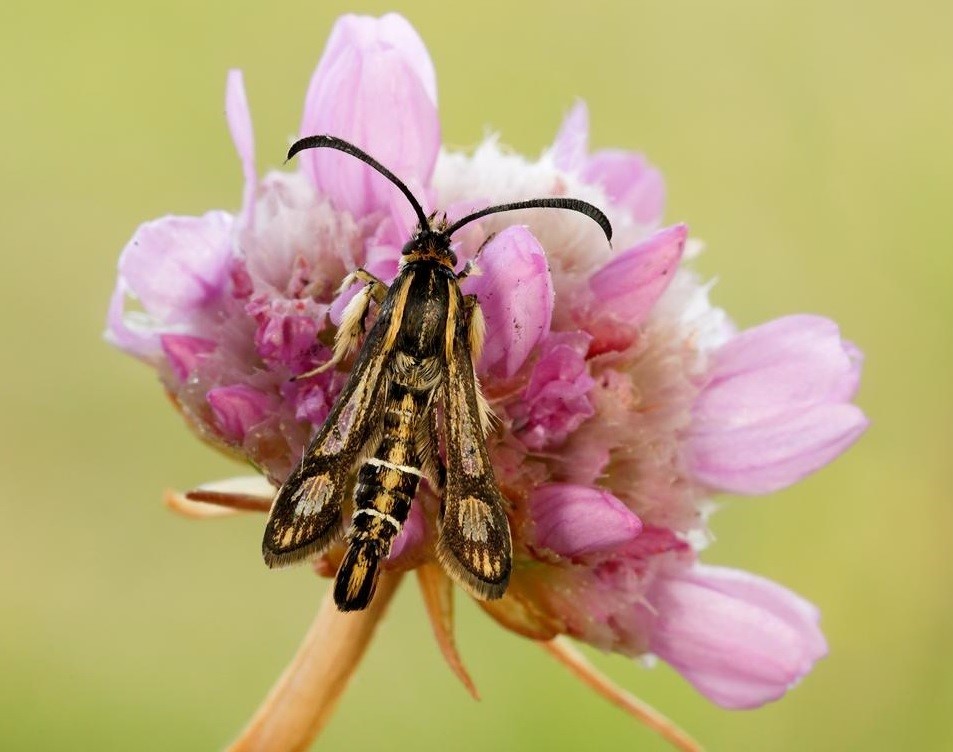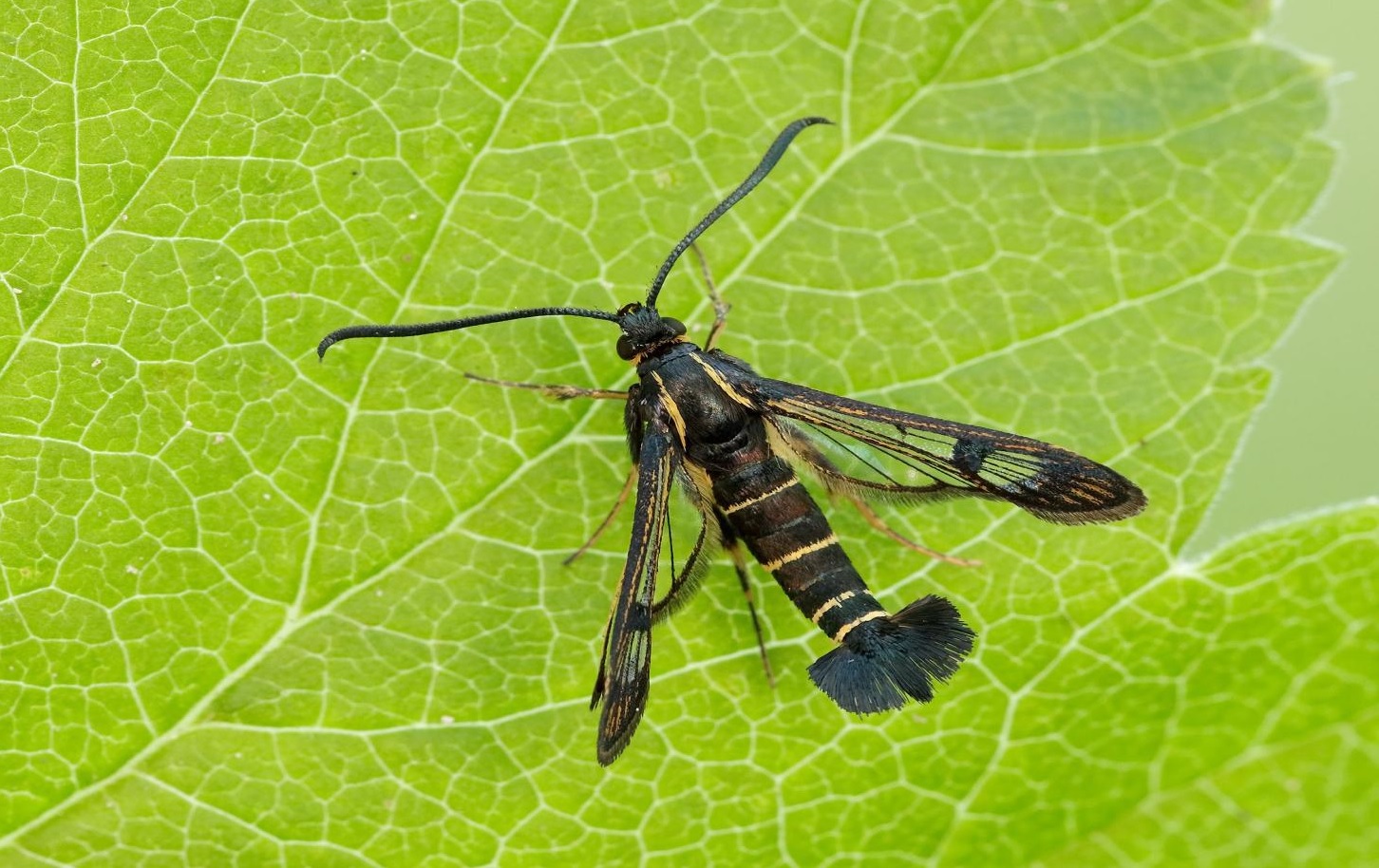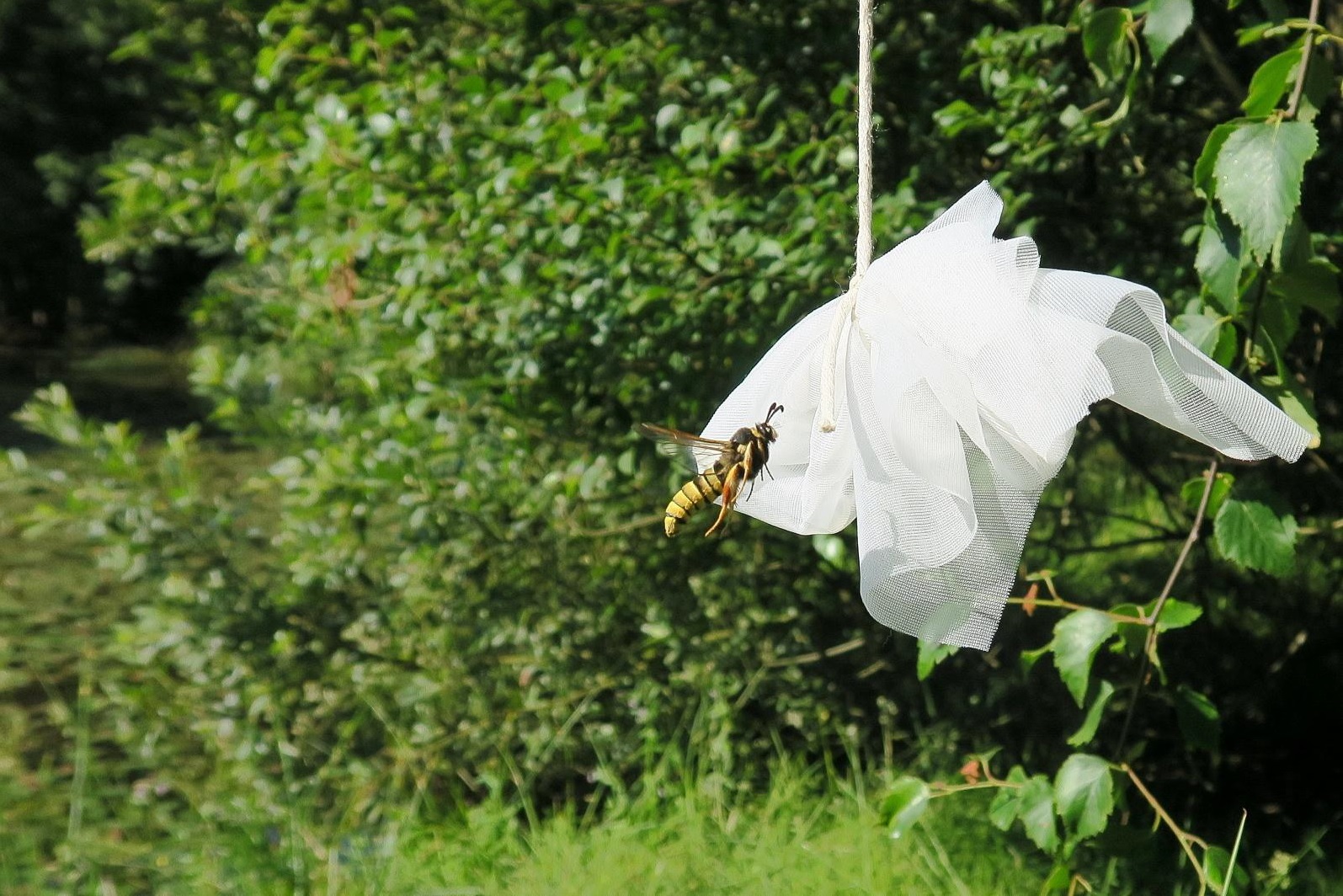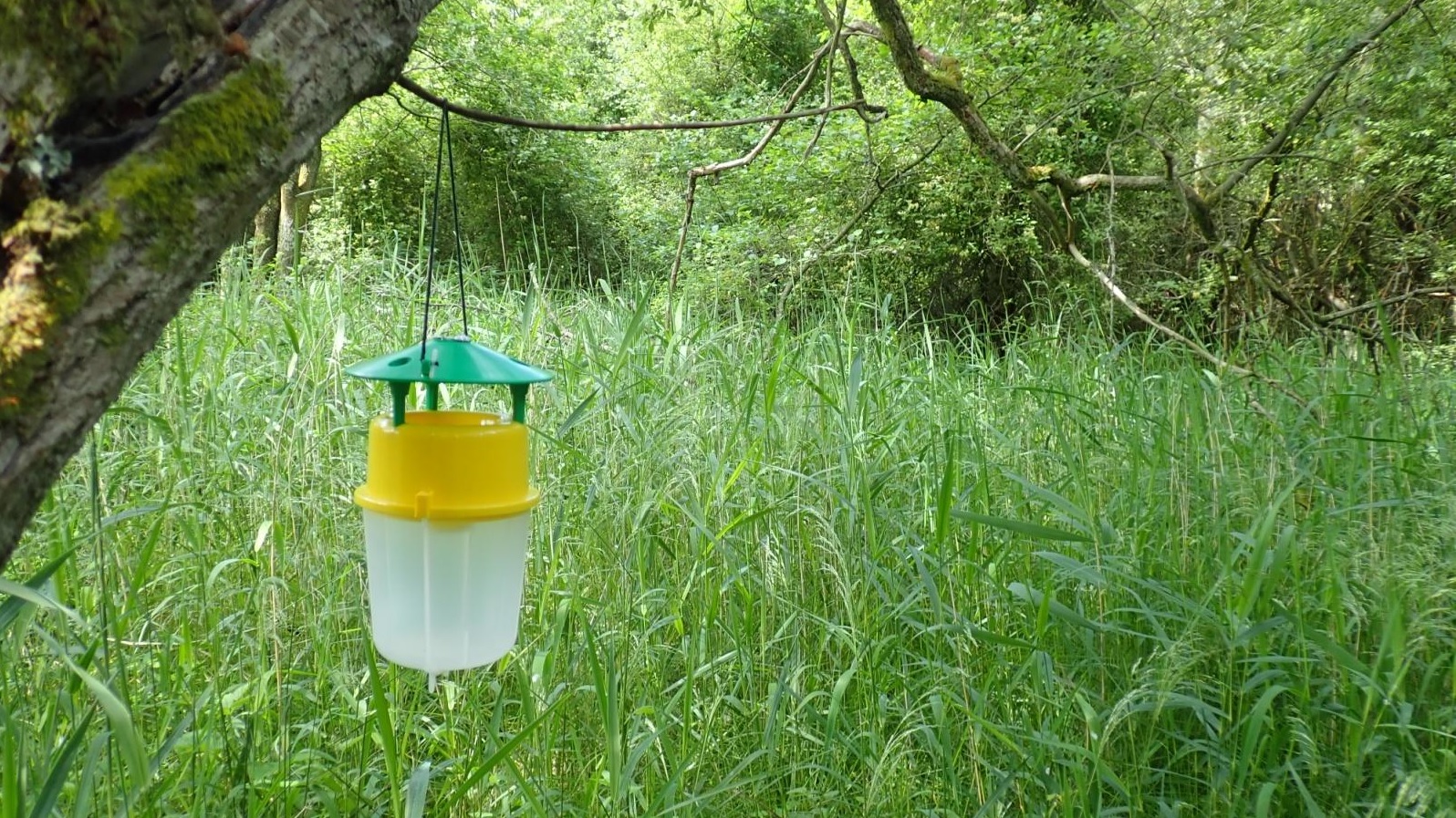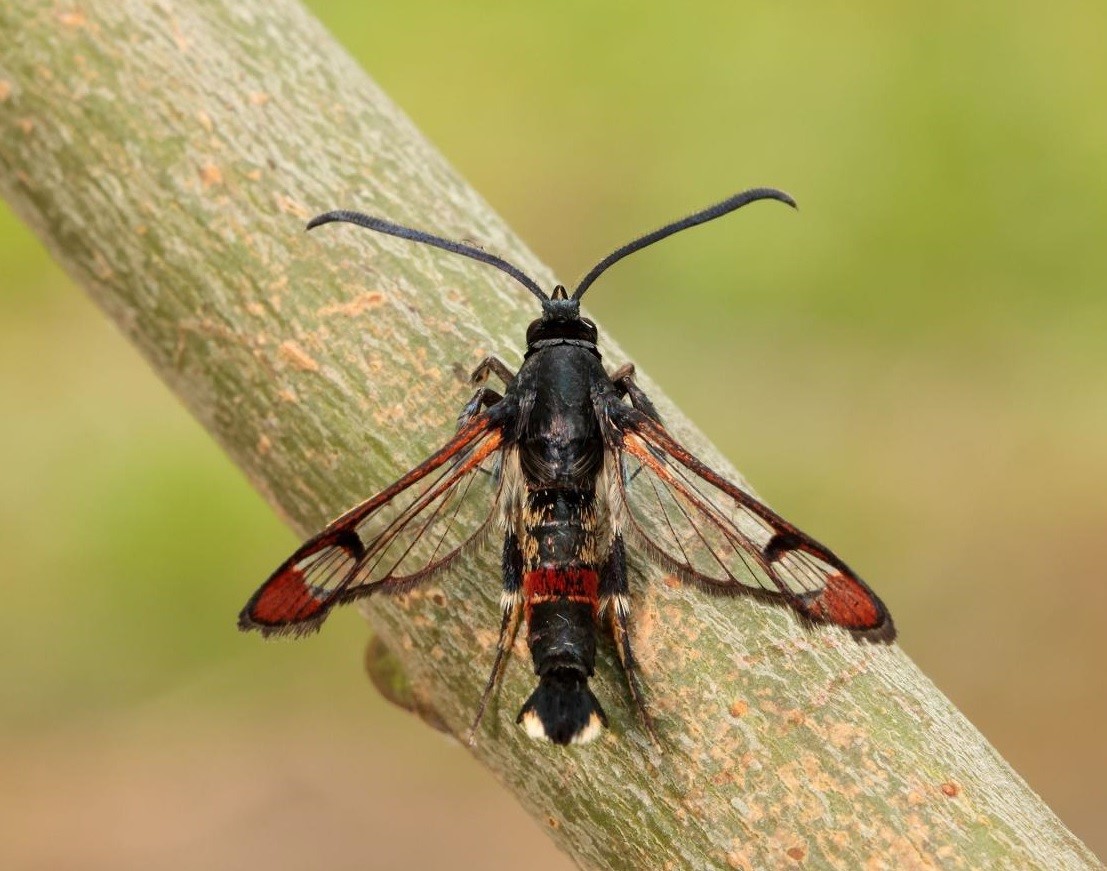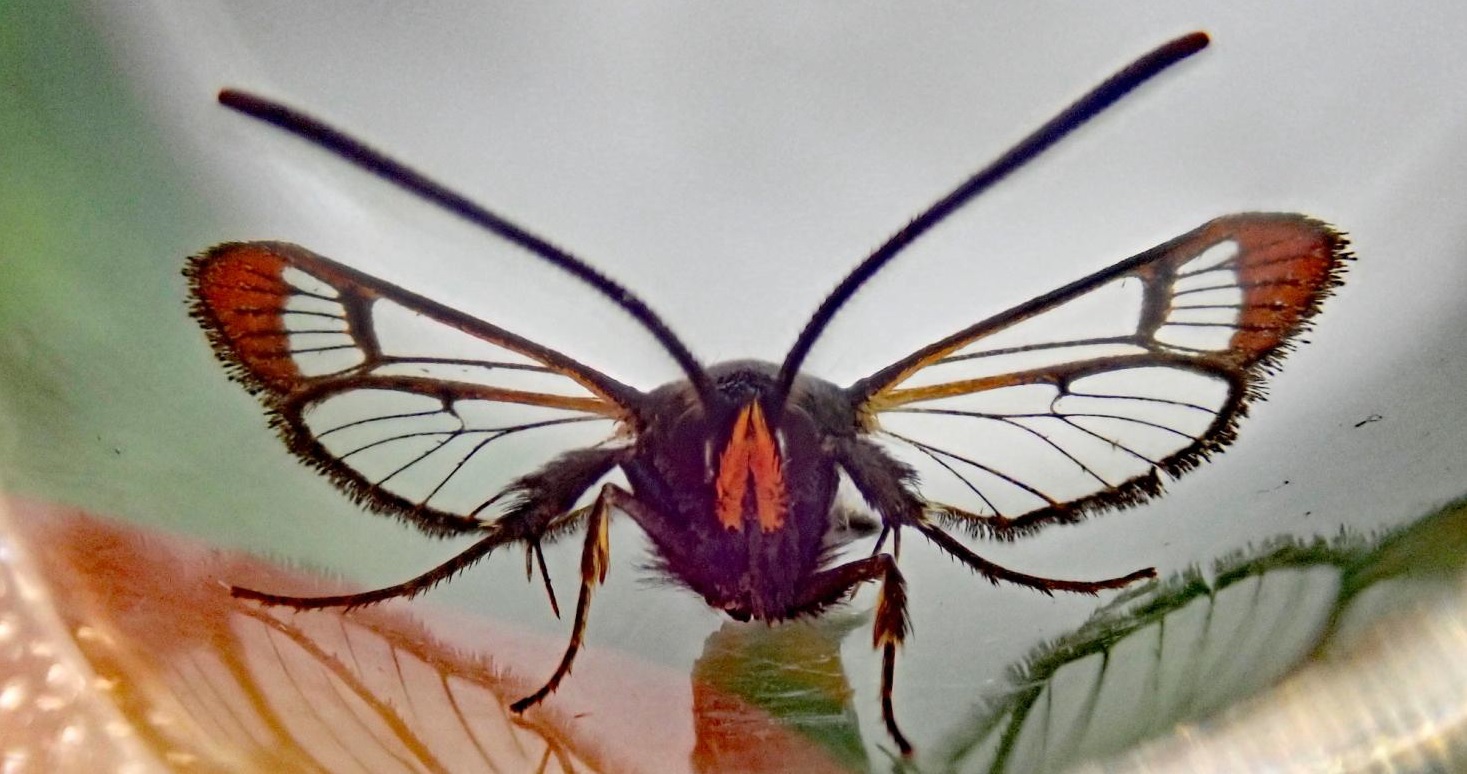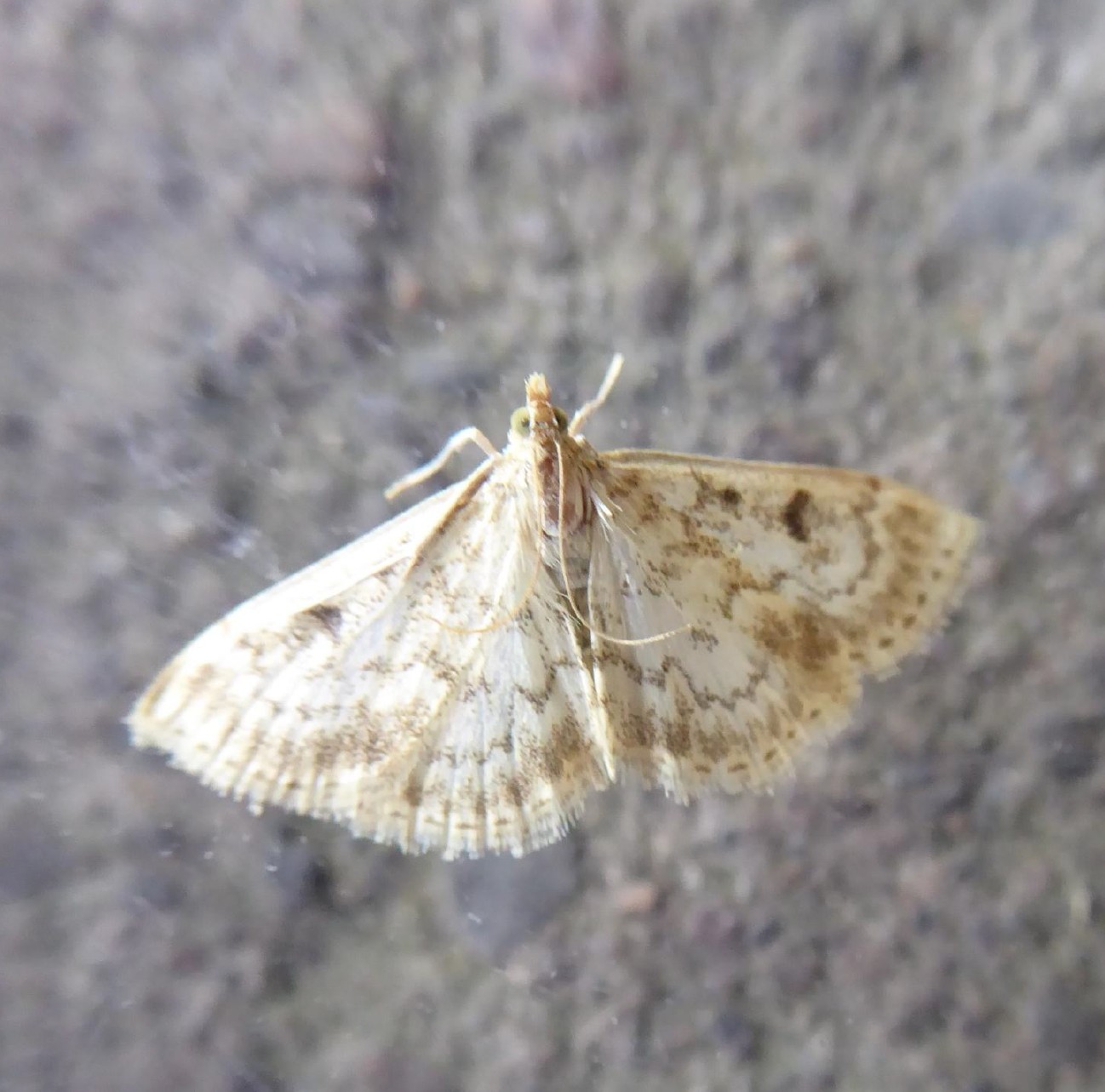The Clearwing moths are members of the family Sesiidae and all of them have wings which have some areas free from scales showing the transparent, underlying membrane. Some species do initially have a covering of scales but these rub off as the moth begins to fly about.
All the species have a similar life history with an egg laid in a crack in the food plant allowing the emerging caterpillar to burrow into the branch, stem or trunk of the plant. The caterpillar eats the tissue of the plant and creates a tunnel as it feeds. When the host plant is a tree the larva may take years to develop thanks to the low nutrition found in wood. The mature larva tunnels towards the bark of the plant and pupates eventually hatching out by the pupa pushing through the thin membrane between it and the open air. As a result the holes on the food plant and the pupal skin hanging out of it are useful signs of the clearwings being present. For example, the holes of the Lunar Hornet Clearwing are about the diameter of a pencil and can easily be found low down on the trunk of old willows even years after the moths have hatched.
Once hatched, normally early in the morning, the males of these day-flying insects rapidly fly off to track down a female by her scent. This is a very efficient process as has been shown by the artificial chemicals which have been produced in the last decade which mimic the smell of the female or pheromone. Lures, made simply of something impregnated with the pheromone have been shown to attract a male within a couple of minutes, if the weather and the time of year are suitable. The photo below shows a standard ‘lobster-pot’ type trap used to temporarily catch these fast flying creatures long enough to identify them.
Sixteen species of Clearwing have been found in the UK and seven of these occur in Scotland. So far, four of these have been recorded in D&G. Two of these live in the wood of willow.
The most widespread is the Lunar Hornet Moth with 42 records spread over all three vice-counties. The majority of the early records, dating back to 1837, were from holes/emerged pupal cases or larvae found in tree trunks. Despite their size, day-flying habit and wasp-like colour they are rarely seen probably because they are present in very low numbers. Some of the early lepidopterists only ever saw the adults by putting a muslin bag round the tree trunk to catch the moths when they emerged! However, since 2020, the use of pheromones has dramatically changed recording. The 13 records since then have all been made using an attractant. A detailed account of this species can be found in a previous Moth of the Week article (July 2020).
The other willow feeder is the Red-tipped Clearwing a much smaller species for which there are only 18 records from D&G. On the wing from the second week of June to the third week of July this is a species of wet, willow scrub habitats and it too was originally found only as larvae or emerged pupae. It was last recorded as an adult in D&G in 1970 and only refound 51 years later when, in 2021, its pheromone was tried at Kirkton.
The Currant Clearwing tunnels in the stems of Black Currant and Red Currant bushes and has been a pest in areas where these fruits are commercially grown. Currants are found throughout low lying areas of Scotland in wet woodland, stream sides and waste ground. However, there are only four records of this moth from Scotland, one of which was from Gretna in 1938.
It maybe this species is more widespread but at very low populations. To find it will need identifying extensive areas of currants and, I imagine, plenty of attempts! The Currant Clearwing lure also attracts the White-barred Clearwing so every moth coming to the pheromone will need it’s identification carefully checked!
The Thrift Clearwing has, so far, the most records for the D&G Clearwings with 54 but those are only for Kirkcudbrightshire and Wigtownshire. As its name indicates it feeds in the stem of Thrift a low-growing tussocky plant found along much of our coast particularly on the rocky sections. As Thrift is a much small plant than a willow tree this is our smallest Clearwing. However, as a day flying moth it can easily be seen buzzing around the Thrift flowers on sunny days through June and July. A more detailed account of this D&G speciality can be seen in a previous Moth of the Week (June 2019).
The other three Scottish Clearwings not yet found in our area may actually be here. All are species of birch woodland particularly mature birch on ancient sites. The Welsh Clearwing is found mainly in the central Highlands, the Large Red-belted Clearwing is a species widely scattered across Scotland from the Borders to Inverness and the White-barred Clearwing was discovered in Scotland in 2021 near Aberfoyle.
Butterfly Conservation is determined to understand the distribution and abundance of all seven Clearwing species but is particularly keen to find out about the latter three. Loans of the respective pheromones may be available from them. See their excellent Clearwing Survey page on the Scottish website for all the details of their Clearwing Survey: https://butterfly-conservation.org/in-your-area/scottish-office/priority-species-updates/scottish-clearwings
If you want to join in this new way of searching for these unusual and rarely seen moths you can buy the pheromone lures from Anglian Lepidopterists Supplies see: https://www.angleps.com/pheromone-lures . There are 19 different Clearwing lures available although most are for species only recorded further south. The website also lists the other species which have also been attracted by these lures including other clearwing species but also a range of other macro, and micro, moths as well as providing plenty of practical information on using the lures.

